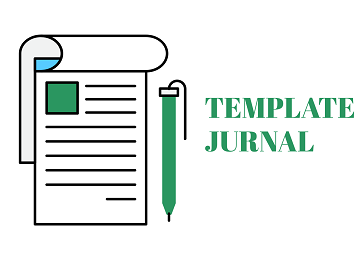ANALISA KESADARAN KONSUMEN TERHADAP PENGGUNAAN STYROFOAM PADA ANAK SEKOLAH MADRASAH TSANAWIYAH NEGERI 1 BANDA ACEH
CONSUMER ANALYSIS OF AWARENESS USING STYROFOAM IN MADRASAH TSANAWIYAH NEGERI 1 BANDA ACEH
Abstract
Penggunaan kemasan plastik sebagai bahan kemasan pada makanan memerlukan perhatian khusus terhadap siswa di sekolah yang berada di Banda Aceh. Salah satu kemasan yang digunakan adalah styrofoam. Penggunaan kemasan styrofoam sangat banyak terutama pada pembungkus makanan, hal ini sangat dikhawatirkan apabila digunakan pada makanan yang kondisinya panas sehingga kemasan tersebut dapat bereaksi dan menghasilkan senyawa karsinogenik. Kemasan ini sangat sering digunakan oleh penjual dikarenakan mudah, ringan dan murah, namun dari sisi kesehatan menunjukkan bahwa kemasan ini kurang baik digunakan pada kemasan bahan pangan yang panas karena akan bereaksi dengan kandungan polimernya. Pengabdian ini dilakukan dengan cara sosialisasi bahaya penggunaan kemasan plastik terutama bahan dasar styrofoam pada siswa sekolah MTSN 1 Banda Aceh. Data yang dihasilkan sebelum dilakukan sosialisasi, hampir 79% siswa tersebut memahami terhadap penggunaan plastik terutama styrofoam, setelah sosialisasi dan hasil survey yang dilakukan menunjukkan bahwa 83% siswa menjadi paham terhadap bahaya penggunaan styrofoam, hal ini menunjukkan bahwa hasil ini menjadi dasar siswa dalam memahami terhadap penggunaan kemasan styrofoam.
Kata kunci: styrofoam, plastik, kemasan, sosialisasi, sekolah, survey
ABSTRACT
The use of plastic packaging as packaging material for food requires special attention to students in schools in Banda Aceh. One of the packaging used is Styrofoam. The use of styrofoam packaging is very much, especially in food packaging. They used Styrofoam on hot food so that the packaging could react and produce carcinogenic compounds. Sellers often use this packaging because it is easy, light, and cheap, but from a health perspective, it shows that this packaging is not suitable for use in hot food packaging because it will react with the polymer content. This service is carried out by socializing the dangers of using plastic packaging, especially the primary material of Styrofoam, to students at MTSN 1 Banda Aceh. The data generated before the socialization was carried out, almost 79% of these students understood the use of plastic, especially Styrofoam, after socialization and the results of the survey conducted showed that 83% of students became aware of the dangers of using Styrofoam, this indicates that these results are the basis for students to understand the use of styrofoam packaging.
Keywords: styrofoam, plastic, packaging, socialization, school, survey
Downloads
References
[2] Sucipta, I.N., Suriasih, K., Kenacana, P.K.D., 2017. Pengemasan Pangan Kajian Pengemasan Yang Aman, Nyaman, Efektif Dan Efisien. Udayana University Press.
[3] Wardyaningrum, D., Widiawati, D., Perdana, A.T., Syariful, S., 2021. Edukasi Keamanan Kemasan Plastik kepada Pedagang Makanan di Lingkungan Sekolah dan Perkantoran. E-Dimas: Jurnal Pengabdian Kepada Masyarakat 12(2), Doi: 10.26877/e-dimas.v12i2.4836.
[4] Al Mukminah, I., 2019. Bahaya Wadah Styrofoam dan Alternatif Penggantinya. Farmasetika.Com (Online) 4(2), Doi: 10.24198/farmasetika.v4i2.22589.
[5] Graca, B., Bełdowska, M., Wrzesień, P., Zgrundo, A., 2014. Styrofoam debris as a potential carrier of mercury within ecosystems. Environmental Science and Pollution Research 21(3), Doi: 10.1007/s11356-013-2153-4.
[6] Wisnuputri, A., Nurkertamanda, D., Budiawan, W., 2014. Pemanfaatan Limbah Organik Tumbuhan dan Hifa Fungi Rhizopus sp. pada Struktur Bantalan Kemasan Barang dengan Metode Eksperimen Faktorial. Industrial Engineering Online Journal 3(1).
[7] Maryani, Y., Kanani, N., Rusdi, R., 2018. Pembuatan Lem Lateks dari Limbah Styrofoam yang Digunakan untuk KEmasan Makanan. Teknika: Jurnal Sains Dan Teknologi 14(2): 189, Doi: 10.36055/tjst.v14i2.5873.
[8] Yang, Y., Yang, J., Wu, W.M., Zhao, J., Song, Y., Gao, L., et al., 2015. Biodegradation and Mineralization of Polystyrene by Plastic-Eating Mealworms: Part 1. Chemical and Physical Characterization and Isotopic Tests. Environmental Science and Technology, Doi: 10.1021/acs.est.5b02661.
[9] Hadiyanto, H., Haris, A., Muhammad, F., Afiati, N., Khoironi, A., 2021. Interaction between styrofoam and microalgae Spirulina platensis in brackish water system. Toxics 9(3), Doi: 10.3390/toxics9030043.
[10] Varma, A.K., Lal, N., Rathore, A.K., Katiyar, R., Thakur, L.S., Shankar, R., et al., 2021. Thermal, kinetic and thermodynamic study for co-pyrolysis of pine needles and styrofoam using thermogravimetric analysis. Energy 218, Doi: 10.1016/j.energy.2020.119404.
[11] Nurul Qomariah., Nursaid, N., 2020. Sosialisasi Pengurangan Bahan Plastik Di Masyarakat. Jurnal Pengabdian Masyarakat Manage 1(1): 43–55.
[12] Ilmiawati, C., Reza, M., Rahmatini, R., Rustam, E., 2017. Edukasi Pemakaian Plastik sebagai Kemasan Makanan dan Minuman Serta Risikonya terhadap Kesehatan pada Komunitas di Kecamatan Bungus Teluk Kabung, Padang. LOGISTA - Jurnal Ilmiah Pengabdian Kepada Masyarakat 1(1): 20, Doi: 10.25077/logista.1.1.20-28.2017.
[13] Lukihardianti, A., Soraya, D.A., Rezkisari, I., 2019. Dominasi Sampah Stirofoam di Laut Indonesia. HR. Republika.














